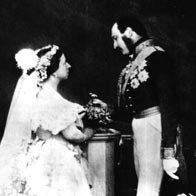I've decided that it might be fun to go thematic for a week or two - and in the spirit of that decision I'd like to welcome you to cake week!
Walk with me - and discover something about the history of the wedding cake.
Over the centuries customs have evolved. I think we need to be grateful for that, because it appears that in Roman times the groom would eat part of a barley loaf baked especially for the occasion ... and then break the rest over the bride's head. I am sure I don't need to elaborate about the symbolism of that particular action! The crumbs that landed on the floor, however, represented good luck and fertility for the bride and groom. It was considered good luck for guests to eat those crumbs, and reportedly nubile delicacies scrambled to secure them - and thus ensure betrothals of their own.
In the Middle Ages biscuits or
scones were present.
scones were present.
Guests brought one small cake to the wedding (and for that read the size of a cupcake) with them.
All the offerings were stacked and the couple kissed (or tried to) over the top of the pile.
This was supposed to bring them good luck.
And many children.
Early on in the 17th century, a popular dish called bride's pie became popular. It came in several formats apparently. Sweet bread filling, mince, or in some cases even mutton pie. There are even records of a pie involving lamb's testicles and oysters. But it's main feature was a glass ring. I guess it was very similar to catching the bouquet at today's weddings - because finding the glass ring meant that you would be the next to get married.
Another tradition that sprang up around this time involved sleeping with a piece of cake underneath one's pillow. Brides would give out slices of cake to the unmarried women present, and legend had it that the sleepers would dream of their future spouses that night.
It was, apparently, French bakers who started us on our road to elaborate cakes - by stacking wheat buns and coating them. As sugar became more plentiful in Europe, so did the refinement process. It followed that icing became progressively whiter. Not only did white represent the bride's virginity, but it also symbolised the family's social standing.
A status symbol, if you will. A sign of their affluence.
A status symbol, if you will. A sign of their affluence.
Which brings us to the multi-layered cakes of the 19th century. They were reserved for royalty (Queen Victoria is seen above) because they were really the only people who could really afford them. Although it should also be said that the first multitiered cakes were real in appearance only. Their upper layers were made of spun sugar, and it wasn't until pillars started to be used (icing was hardened to prevent the pillars from sinking into the bottom layer), that the wedding cake started its journey towards the extravaganzas that we see all around us today.
Of course talk about pillars makes me think of my parents' wedding cake. The one below is not theirs, but I can't think of pillars without thinking of them.
We've come a long way from the use of pillars - and in some
cases a really long way.
cases a really long way.
I am not sure how I would feel about wearing my wedding cake or having it be a replica of me - but people have clearly done both.
Today's cakes range from elegant and classic ... to whimsical
and fun ... to downright works of art.
and fun ... to downright works of art.
Everything leads up to the moment when the couple shares a
slice of their future surrounded by people who love them - and
some of the cakes are little short of masterpieces.
In our next installment (a couple of months down the road)
we'll be talking about the Groom's cake, the symbolism of
cake cutting, and the tradition of saving the cake's top layer.
Till then .. enjoy the eye candy!
Two of my favourites.
The Cake Company (top) and Cake Designs by Helen (bottom)
Plus a few more.



























No comments:
Post a Comment